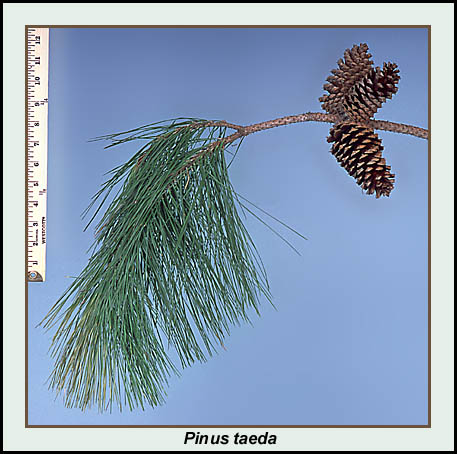Loblolly Pine
Pinus taeda
Family: Pinaceae
Natural History

Needles and cones of loblolly pine | Photo credit: Larry Korhnak, University of Florida
The word "loblolly" originally meant a thick porridge or gruel served to English sailors. When Europeans first came to settle the southeastern United States, they used that word to describe some of the local swamps where they found mud with the same thick, gooey consistency. The term also came to be applied to some of the plants that commonly grew in these areas, which is how loblolly pine (Pinus taeda) and loblolly bay (Gordonia lasianthus) got their common names.
Today, loblolly pine - also called oldfield pine - is the most important commercial timber in the southeastern United States. More than 50 percent of the standing pine in the southeast is loblolly. The specific epithet - taeda - comes from the Latin word for torch, and refers to the resinous wood.
This is an easily-seeded, fast-growing member of the yellow pine group, and is an aggressive invader in fallow fields. It is widely grown in plantations for commercial timber production, but also has been planted to help stabilize soil and reduce erosion, or as a noise and wind barrier. Loblolly has also been planted in mine reclamation areas and - due to its high litter and biomass productivity - loblolly pine is being studied as a possible alternative source for energy.
